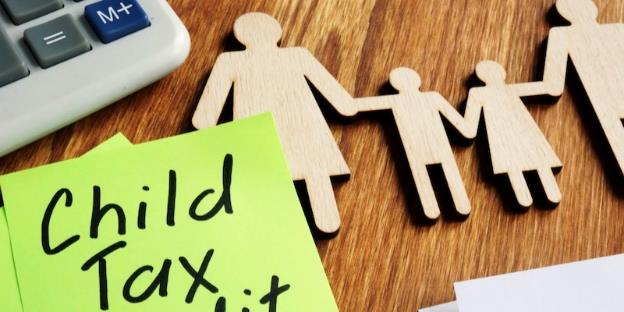The Child Tax Credit (CTC) is a financial assistance scheme in the U.S. that supports families with qualifying children to reduce their tax liability. The CTC has been drastically modified through the American Rescue Plan in 2021 to extend the credit quantity and also make it refundable for deserving parents.
However, these modifications expired on the quilt of 2021, and the CTC reverted to its pre-pandemic regulations for the tax year 2022. This article will explain what the CTC is, how it works, and the way it influences parents’ finances.
The Child Tax Credit: Meaning and Eligibility
The CTC was initially introduced in the year 1997 to lessen the monetary burden of raising youngsters. It is a form of relief that lowers your tax bill based on how many youngsters you have who meet eligibility criteria.
A childcare tax credit is different from a standard tax deduction as the former reduces your tax liability in terms of money while the latter lowers your taxable income. In simple words, it means it reduces the amount of tax you owe straightaway.
The CTC is also a refundable tax credit benefit, in which if the credit exceeds your legal tax responsibility, you may get the extra quantity back as cash. However, there may be a restriction on how the CTC is refundable, which depends on your income and quantity of kids.
Financial Implication of the Child Tax Credit
For the fiscal year 2022, the CTC offers a cash transfer of up to a maximum of $2,000 per qualifying infant below age 17, while the eligible youngsters can also get up to $1600 refundable money. The eligibility requires a valid social protection structure, over half of a year living with the family, and an income beneath a certain threshold. However, there's also a mechanism of profit restriction that works out in the case of better-income families.
Who Is Eligible for the Child Tax Credit?
To claim Childcare Tax Credit, you and your child need to meet certain necessities.
- The child needs to be under age 17.
- Your child must be related to you in one of the following capacities: your son, daughter, qualified foster child, adopted child, stepchild, sibling, stepsibling, or a direct descendant of any of these.
- The infant ought to be a U.S. Citizen.
- The child must meet the registration of Social Security for U.S. employment.
- Your kid should offer no greater than half of their economic help at some point in the year.
- The infant ought to have lived with you for more than 1/2 the year.
- The infant should be claimed as your dependent on your tax go-back.
- The infant should no longer file a joint return with their spouse.
How Does the Childcare Tax Credit Work?
The effects of the Child tax credit on a family’s finances are different depending on how the policy is specifically designed and implemented in different income households. A refundable tax credit initiated by the American Rescue Plan Act of 2021 enabled financial assistance to all families with children as well as to those with no taxable income.
To declare the CTC, first check your eligibility by visiting the Interactive Tax Assistant (IRS) portal and provide your family details, then give your dependent children’s information on U.S. Individual Income Tax Return Form-1040 together with a completed schedule-8812 (Credits for Qualifying Children and Other Dependents).

The CTC consists of two elements: the basic CTC and the Additional CTC (ACTC). The basic CTC is the same as $2,000 in keeping with a qualifying child. However, it can be most effective to offset your tax liability as much as 0. If your basic CTC is more than your current year’s tax liability, you will be allowed to claim the Additional CTC in the form of a refund for that extra value.
The ACTC is equal to 15% of your earned profits above $2,500 and up to a maximum of $1,500 with each qualifying child. Earned profits consist of wages, salaries, self-employment earnings, and sure incapacity advantages. The ACTC is entirely refundable, which means you can get it as cashback even if you owe no tax.
How Does the Child Tax Credit Affect Parents’ Finances?
The CTC may have a significant impact on the father and mother’s purchasing power since it determines how much tax payment will be borne by them. As witnessed in the study conducted by the Center on Poverty and Social Policy, the Child tax credit helped in the reduction of poverty, enabling households to meet their basic needs, especially for low- and middle-earning families.

Financial Stability of Parents
Since the expiration of the expanded CTC in 2022, many families will see a discount in their tax credit score and refund quantities, which could affect their financial stability and sound well-being.
Benefits and Drawbacks of Child Tax Credit for Parents
The Child tax credit offers benefits as well as drawbacks to some extent for the parents of eligible children. They are less likely to feel behavioral issues and injuries that require medical attention when they get the CTC.
Further, it has reduced their material sufferings, struggle for multiple jobs, and running out of money. On the contrary, due to strict qualifying criteria and the design of the program, some single mothers were badly hurt by the CTC.
Conclusion
The CTC is a tax gain that helps families with qualifying kids lower their tax payments and thereby enhance their refund. The credit amount and eligibility depend on the child's age, relationship, citizenship, and profits stage of the dad and mom. The credit score was briefly accelerated in 2021 to offer more comfort to households all through the pandemic, but it has reverted to its preceding degree in 2022. According to research, the expanded credit score had nice influences on children’s poverty, meal safety, and circle of relatives’ finances. The Child tax credit is one of the ways the authorities help parents and kids within the U.S.




